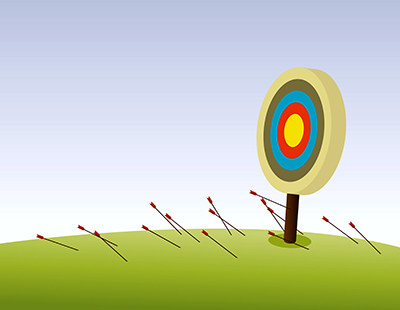Unintended Consequences
The best laid schemes o' mice an' men. Gang aft a-gley.
Ever have a sure-fire positive reinforcer fail to change the target behavior? Or, worse yet, make things worse instead of better? Or maybe change the target behavior but at the same time have even more detrimental behavior appear as the targeted behavior changes. When any of these things happen, Browning’s observation is substantiated. Why does positive reinforcement have such unintended consequences?
First, reinforcers are not universal, they are idiosyncratic to the individual. Sure, some reinforcers, like praise or money, work for large numbers of people, but everyone reading this knows of circumstances where these two pillars of positive reinforcement would not work for them, or for others. Reinforcers are functional and they have to be shown to work before they can be used—and before they can be called ‘reinforcers,’ an error of definition that can get us all in trouble. Calling something a reinforcer does not make it one. Even if one has a functionally demonstrated reinforcer, meaning that it causes a change in behavior, it may work differently under different circumstances. Food is most predictably a reinforcer for a rat that hasn’t eaten for a while. The reinforcing efficacy of money changes with circumstances – a dollar is more likely to function as a reinforcer if my pockets are empty than if I have 10 $1000 bills stuffed in those same pockets. So, don’t be fooled by categorizing things and events as reinforcers, and expect them to work as such, before actually finding out if they function as you anticipate they will, in the circumstances where you plan to use them.
 Second, sometimes things we expect to function as reinforcers actually have the opposite effect – they decrease or fail to maintain the targeted response. These things truly are not reinforcers in the context where they are being used, and it’s inappropriate to categorize them as reinforcers. Such a failure may be due to the context in which they are being used because, as noted above, reinforcers are only reinforcers under certain circumstances and rarely universally so. If the conditions needed to establish the event as a reinforcer aren’t present, then behavior will not be maintained by the event in question. Failures to maintain behavior also may be due to the absence of an appropriate, that is, consistent, contingency (a causal or dependent relation) between the response and the nominal reinforcer. Removing the dependency between the response and reinforcer as often as not reduces, or even eliminates, the target response.
Second, sometimes things we expect to function as reinforcers actually have the opposite effect – they decrease or fail to maintain the targeted response. These things truly are not reinforcers in the context where they are being used, and it’s inappropriate to categorize them as reinforcers. Such a failure may be due to the context in which they are being used because, as noted above, reinforcers are only reinforcers under certain circumstances and rarely universally so. If the conditions needed to establish the event as a reinforcer aren’t present, then behavior will not be maintained by the event in question. Failures to maintain behavior also may be due to the absence of an appropriate, that is, consistent, contingency (a causal or dependent relation) between the response and the nominal reinforcer. Removing the dependency between the response and reinforcer as often as not reduces, or even eliminates, the target response.
 Finally, adding a reinforcer can increase a target behavior, or removing a reinforcer can decrease a target behavior, but changes in other behavior, which might not always be positive, may accompany changes in the target response. The fact that reinforcers can have so-called multiple functions often is overlooked when selecting reinforcers for positive behavior change. A reinforcer, for example, may increase the targeted response, but, depending on the circumstances or conditions under which the reinforcer is administered, other behavior that competes with the target response may be developed and consistently brought about by the conditions, that is, schedules, under which the reinforcer is delivered. For example, in the laboratory, removing a reinforcer may eliminate the target response of a pigeon, but if another pigeon is nearby, it is highly likely that the pigeon experiencing extinction will attack that other pigeon, sometimes inflicting significant injury on it.
Finally, adding a reinforcer can increase a target behavior, or removing a reinforcer can decrease a target behavior, but changes in other behavior, which might not always be positive, may accompany changes in the target response. The fact that reinforcers can have so-called multiple functions often is overlooked when selecting reinforcers for positive behavior change. A reinforcer, for example, may increase the targeted response, but, depending on the circumstances or conditions under which the reinforcer is administered, other behavior that competes with the target response may be developed and consistently brought about by the conditions, that is, schedules, under which the reinforcer is delivered. For example, in the laboratory, removing a reinforcer may eliminate the target response of a pigeon, but if another pigeon is nearby, it is highly likely that the pigeon experiencing extinction will attack that other pigeon, sometimes inflicting significant injury on it.
 The point of this commentary is that, even when reinforcers have the desired effect of changing the target behavior, they may have other, unintended, consequences that require that we consider their use not so much in an absolute sense but in relation to the context (the environment that surrounds the occurring and desired behavior) in which they are to be used, as well as the costs versus benefits of their use. Keeping a keen eye on unintended consequences is always important when behavior change, in the direction you want, is the goal. We are all subject to our histories and the conditions that surround us. Look to see what actually happens—this is the best predictor of how reinforcing your effort really is in supporting another pigeon or person’s change.
The point of this commentary is that, even when reinforcers have the desired effect of changing the target behavior, they may have other, unintended, consequences that require that we consider their use not so much in an absolute sense but in relation to the context (the environment that surrounds the occurring and desired behavior) in which they are to be used, as well as the costs versus benefits of their use. Keeping a keen eye on unintended consequences is always important when behavior change, in the direction you want, is the goal. We are all subject to our histories and the conditions that surround us. Look to see what actually happens—this is the best predictor of how reinforcing your effort really is in supporting another pigeon or person’s change.



